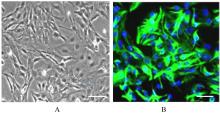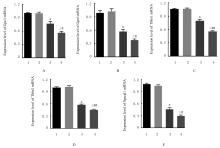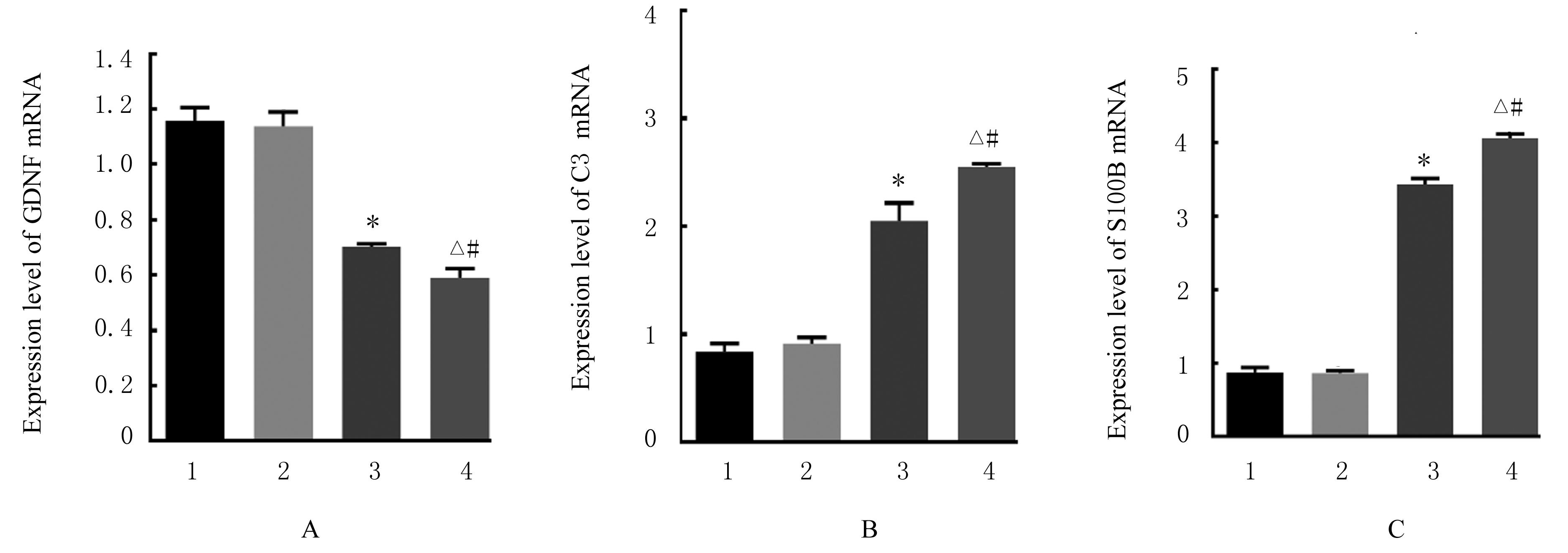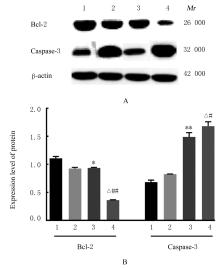| [1] |
Huijuan SONG,Zhenhua XU,Dongning HE.
Effect of apolipoprotein C1 expression on proliferation and apoptosis of human liver cancer HepG2 cells and its mechanism
[J]. Journal of Jilin University(Medicine Edition), 2024, 50(1): 128-135.
|
| [2] |
Yaxin LIU,Jian LIU,Zhen LI,Zhanhong CAO,Haonan BAI,Yu AN,Xingyu FANG,Qing YANG,Hui LI,Na LI.
Inhibitory effect of royal jelly acid on proliferation of human colon cancer SW620 cells and its network pharmacological analysis
[J]. Journal of Jilin University(Medicine Edition), 2024, 50(1): 150-160.
|
| [3] |
Xiaoni WANG,Tao GUO,Qiyun LUO,Lifeng GUAN.
Effect of usnic acid on biological behaviors of hypertrophic scar fibroblasts and JNK/MAPK signaling pathway
[J]. Journal of Jilin University(Medicine Edition), 2023, 49(6): 1445-1451.
|
| [4] |
Aihua REN,Xinda JU,Aofei LIU,Yongchao LIU,Yanfeng LIU.
Effect of ganoderic acid A on proliferation and apoptosis of human non-small cell lung cancer PC-9 cells and its mechanism
[J]. Journal of Jilin University(Medicine Edition), 2023, 49(6): 1466-1472.
|
| [5] |
Lu FU, Yanjue YE, Jiangying LI, Ziyi TANG, Li YIN.
Expressions of Sirtuins protein in testis tissue and GC-2 cells in male reproductive system damage model mice induced by bisphenol A and their significances
[J]. Journal of Jilin University(Medicine Edition), 2023, 49(5): 1107-1116.
|
| [6] |
Xing LIU,Jiali LIU,Liangui NIE,Maojun LIU,Junxiong ZHAO,Liuyang WANG,Jun YANG.
Improvement effect of SO2 on myocardial fibrosis after acute myocardial ischemic injury in rats and its mechanism
[J]. Journal of Jilin University(Medicine Edition), 2023, 49(5): 1125-1133.
|
| [7] |
Yong GUO,Shengyan WANG,Jingjing YI,Sen CUI.
Effect of salidroside on apoptosis of CD71+ nucleated red blood cells in bone marrow in high altitude polycythemia model rats
[J]. Journal of Jilin University(Medicine Edition), 2023, 49(5): 1174-1181.
|
| [8] |
Yuanying SONG,Jing KAN,Kun PENG,Yue LI.
Effect of honeysuckle extract on proliferation and apoptosis of airway smooth muscle cells in asthmatic model mice
[J]. Journal of Jilin University(Medicine Edition), 2023, 49(4): 1001-1007.
|
| [9] |
Meng LIU,Xiaodong HUANG,Zheng HAN,Qingxi ZHU,Jie TAN,Xia TIAN.
Effect of cadherin-17 on proliferation and apoptosis of colorectal cancer cells and its PI3K/AKT/mTOR signaling pathway regulatory mechanism
[J]. Journal of Jilin University(Medicine Edition), 2023, 49(4): 1008-1017.
|
| [10] |
Xuying WANG,Mingzhen JING,Jin YU,Rong FU,Ru YANG.
Effects of miR-181a-5p and BACH2 expressions on apoptosis and invasion of leukemic CCRF-CEM cells
[J]. Journal of Jilin University(Medicine Edition), 2023, 49(4): 840-849.
|
| [11] |
Guan LIU,Guizhou TAO,Hongxin WANG.
Effect of baicalin on myocardial hypertrophy and apoptosis induced by abdominal aorta ligation in rats and its mechanism
[J]. Journal of Jilin University(Medicine Edition), 2023, 49(4): 850-857.
|
| [12] |
Yuanyuan LIANG,Song ZHAO,Jing HU,Ni AN,Yanlu WEI,Rongjian SU.
Effect of motesanib combined with EZH2 inhibitor GSK126 on proliferation and apoptosis of liver cancer Huh7 cells and its mechanism
[J]. Journal of Jilin University(Medicine Edition), 2023, 49(4): 896-904.
|
| [13] |
Hongli CUI,Siqi FAN,Wenfei GUAN,E MENG,Jiatong LIU,Xuetong SUN,Chunxu CAO,Lixin LIU,Yali QI,Fang FANG,Zhicheng WANG.
Inhibitory effect of irradiation enhanced by gallic acid-lecithin complex-induced oxidative stress on proliferation of A549 cells
[J]. Journal of Jilin University(Medicine Edition), 2023, 49(4): 941-946.
|
| [14] |
AIKEREMUJIANG·Aerken, RIXIATI·Paerhati,Zheng ZHANG,Sheng ZHAI.
Effect of miR-7 on osteogenic differentiation of steroid-induced avascular necrosis of femoral head cell model and mechanism of endoplasmic reticulum stress-mediated apoptosis
[J]. Journal of Jilin University(Medicine Edition), 2023, 49(4): 947-957.
|
| [15] |
Hongying LI,Chenyan WANG,Shichao GUO,Youwei ZHAO,Yanbo DONG,Jiancheng HUANG.
Effect of down-regulation of miR-320a expression on proliferation and apoptosis of cardiomyocytes induced by hypoxia/reoxygenation
[J]. Journal of Jilin University(Medicine Edition), 2023, 49(4): 958-967.
|
 )
)

















